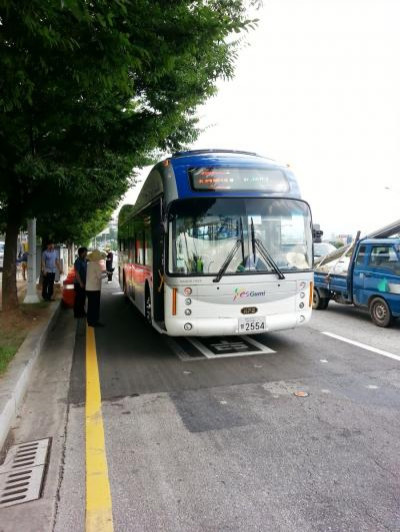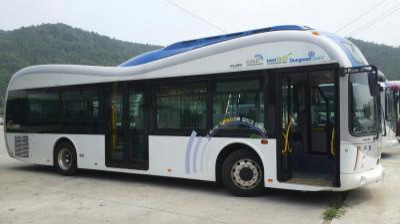Self-Charging Bus: Korean Electric Buses Use Wireless Technology To Charge While Driving [PHOTOS]
The city of Gumi, South Korea, introduced two city buses Tuesday that show new capabilities for purely electric transportation. Known as Online Electric Vehicles, or OLEVs, the buses can charge while stationary or being driven and eliminate the need for charging stations or electric cables.
OLEVs receive power wirelessly through “Shaped Magnetic Field in Resonance” technology. This technology, developed by the Korea Advanced Institute of Science and Technology, enables the buses to absorb electricity from the road while driving. Power cables are buried in the road to create electromagnetic fields, and a receiving device underneath the bus converts the field into electricity. This is used to charge a battery that is only about a third of the size of batteries on standard electric cars.



The strips are fairly small, so only a few sections of road need to be rebuilt with the embedded cables. They create an EMF that complies with international regulations for safety. The power strips turn on only when an OLEV bus passes by and switches off for other cars to prevent any interference with electronics.
OLEV technology was first introduced for trams at an amusement park in Seoul and shuttle busses at the KAIST campus. If the operation of the two city buses proves successful by the end of the year, Gumi plans to invest in 10 more that will go into operation by 2015.
© Copyright IBTimes 2024. All rights reserved.




















